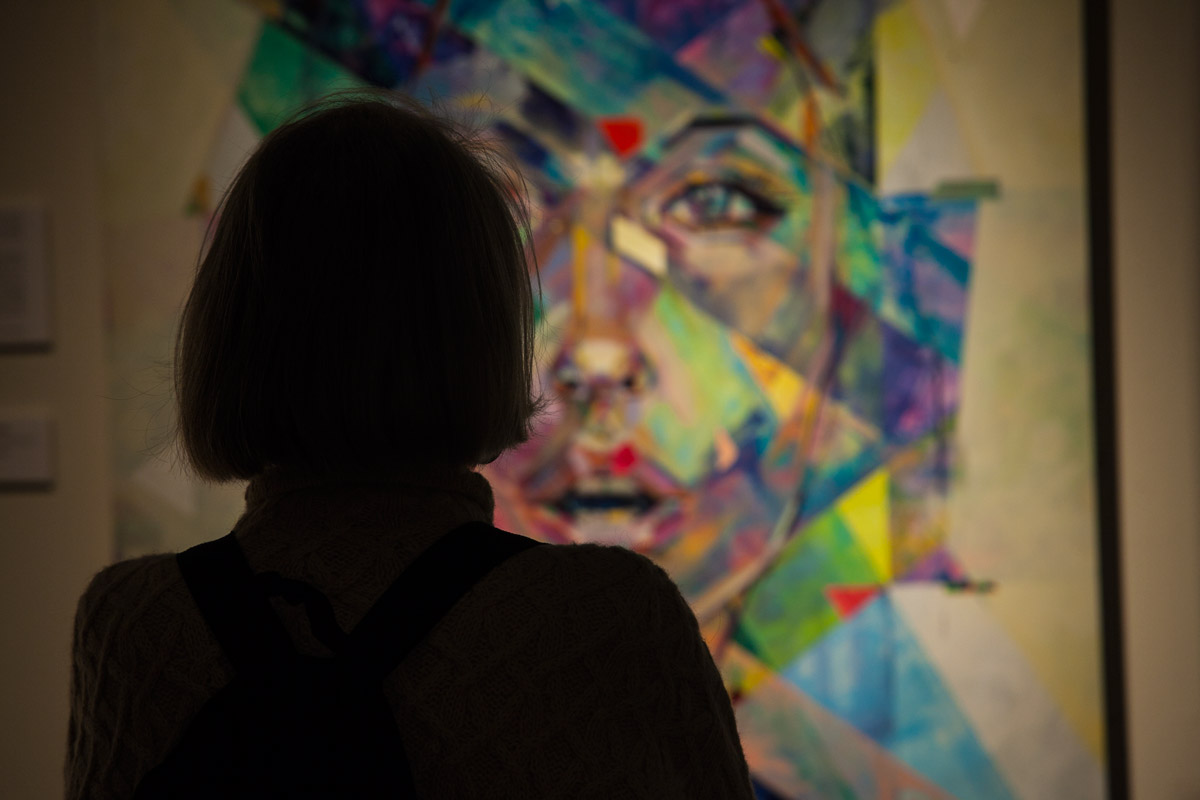Creativity Abounds: A Conversation with the Faculty of Art and Design
Published: February 10, 2015 | Author: Bailey Bowthorpe | Read Time: 4 minutes
 Southern Utah University's Art and Design faculty are engaged in creating and teaching art of all kinds. In this final week of the department’s faculty exhibition in the Braithwaite Fine Arts Gallery, SUU takes a look into the inspiration of some of our talented faculty.
Southern Utah University's Art and Design faculty are engaged in creating and teaching art of all kinds. In this final week of the department’s faculty exhibition in the Braithwaite Fine Arts Gallery, SUU takes a look into the inspiration of some of our talented faculty.
Jeffrey Hanson, chair of SUU’s Department of Art and Design said, “Our faculty members are all accomplished artists whose work has been exhibited in museums and galleries nationally and internationally."
Eric Brown, Andrew Marvick, Deborah Snider, Benjamin Sowards, and Susan Harris are all featured in the exhibition and took time to share their unique artistic perspectives.
Q: Why did you become an artist?
Brown: I suppose because it seemed like it was something important and meaningful.
Marvick: I’ve always felt an instinctive and intimate affinity for the formal language of art. Even as a child, drawing was my way of expressing myself; I drew constantly through high school, then discovered oil painting and recently watercolor.
Snider: I became an artist because I've never known anything else! I began drawing at the age of two, won a coloring contest at four, and the rest is history.
Sowards: I knew that I wanted to be an artist from the time I dropped out of preschool so I would have more time to draw.
Harris: I always enjoyed making art, from earliest childhood and always loved the smell of clay. From the first time I made things out of mud. There were a few artists in my family, and I was fascinated with their studios and materials.
Q: What is your favorite work of art? How does it inspire you?
Brown: Edouard Vuillard's Large Interior with Six Figures, in the Kunsthaus in Zurich (although I reserve the right to change my mind several times a day). I like the space and the pattern on pattern, which tends to contradict the space.
Marvick: I don't have a single favorite work of art; I have hundreds of favorites. One work, however, has had a longer and deeper influence on me than others: The Death of Sardanapalus, by Eugène Delacroix. I discovered it at age 10; it has been a part of me since.
Snider: I have so many favorite pieces of art and favorite artists that it's hard to decide. I would include on my list Artemisia Gentileschi, Alphonse Mucha, Daniel Sprick, Lee Bontecou, James Christensen, Antoni Gaudi, Judy Chicago, Sandy Skoglund, Jerry Uelsmann, Andy Goldsworthy, and Paula Nadelstern, The common threads among these artists are their depth of concept and attention to detail.
Sowards: Norman Rockwell’s 1951 painting, “Saying Grace”. The painting implies an entire narrative within a single, very still moment. The psychic interiority and particularity of gesture triggered a surprisingly complex emotional response the first time I saw it. I attempt to elicit a similar response with my work.
Harris: I have no particular favorite, but my background in anthropology and archeology, as well as childhood visits to museums in New York City, introduced me to people and cultures of the past, and artifacts from those cultures.
Q: Why did you become a professor?
Brown: I love to watch students develop as artists in school and afterward.
Marvick: There’s nothing I enjoy more than a good, intense discussion about a complex issue with others who enjoy it too. University teaching offers me many such opportunities for the free exchange of ideas — and I even get paid for it!
Snider: Becoming a professor was both a happy accident and a natural evolution of my career. My previous life experience included teaching art in the K-12 public school environment. All of this experience serves me well in my current capacity as area head for secondary art education and museum studies at SUU.
Sowards: The opportunity to teach and associate with students and my colleagues, within the context of a university setting, refreshes, invigorates and inspires my own studio work.
Harris: I had gone to graduate school to improve my work and had taught at the community art center in Logan, Utah for many years, so continuing as a teacher and mentor made sense to me. Once I was qualified, it became a goal.
Q: What do you enjoy most about working with student artists?
Brown: The fast learning curve of students is exciting to me.
Marvick: It’s satisfying and reassuring to share ideas with people who see the world in the same way I do: as something to be seen. There’s just as much room for disagreement among artists as among any other group of people; but most of us share a common approach to the expression of our thoughts and feelings.
Snider: Working with student artists and arts educators at SUU is thrilling because there is a commitment to learning, a skill level that I have not seen in previous institutions at which I have worked, and a passion for creativity. I can't imagine wanting to be anywhere else.
Sowards: Their passion, vision, courage and most of all their optimism.
Harris: There is nothing more satisfying for me than helping an individual identify their goals and find their passion, and then learn the skills to achieve their dreams.
The faculty exhibition is open Tuesday through Saturday from noon to 7 p.m. until Saturday, February 14. The exhibition is free and open to the general public.
Contact Information:
435-586-5400
Contact the Office of Marketing Communication
This article was published more than 3 years ago and might contain outdated information or broken links. As a result, its accuracy cannot be guaranteed.

